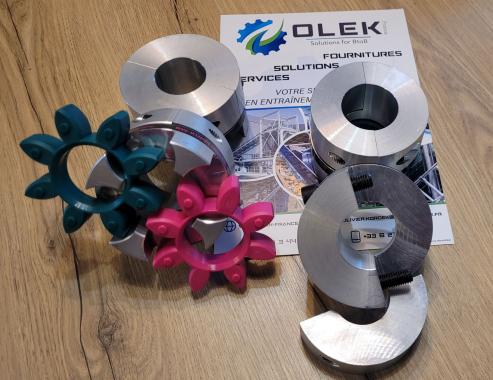Open innovation and industry: benefiting from it and getting people to accept it
Open innovation and industry: benefit from it and have it accepted
Your R&D team has been working on an innovative idea for several months. You think it could eventually revolutionize the sector, but you lack the resources, the time, perhaps also the skills and new thinking to develop your project. Why not make your company evolve more towards the industry of the future and opt for external collaboration thanks to open innovation ? If your teams and your management are reluctant to share your achievements, discover the advantages of open innovation for a company of the future .
What is open innovation?
The concept of open innovation, or open innovation in French, corresponds to an opening of the innovation and R&D departments of companies and industrialists, towards external collaborations of all types .
What problem does an R&D team encounter within a company?
As the CEO of Procter & Gamble said, “ On a given subject, it is impossible to bring together all the intelligence available on the planet ”. This sentence sums up the problem well and opens the mind to open innovation.
To become the best on a specific theme , staying locked up with your teams while thinking about the problem will probably not give as good results as looking for other people who are working on the same subject.
Unity is strength, but it is above all diversity that allows us to move forward faster together .
How does open innovation solve a problem of resources?
Open innovation proposes to bring together all the entities having in common a subject of study or research to work in collaboration and benefit from the strengths of each .
It doesn't matter if you are a large group, an SME, a start-up or a university, you have resources and intelligence that other players can benefit from. Just as you can take advantage of their strengths!
The collaboration nestles at the heart of the concept of open innovation and revolutionizes an archaic way of thinking dating from the 70s during which patents and industrial property represented a real competitive force.
This time is over, because the competition is fierce and companies must innovate quickly to stand out.
Why is open innovation a winner for all types of structures?
The collaboration suggested by open innovation brings different benefits depending on the size of the structure that joins a community working on a project.
What are the strengths of each entity in open innovation?
A large group can, for example, imagine a tool that would allow the industry of the future to take an additional step. The ideas are there, but the people are missing to make them happen.
In this case, soliciting research organizations that have the skills to develop the necessary technologies becomes a relevant strategic approach.
Finally, when ideas and techniques meet, SMEs and start-ups are the most reactive and the most efficient in designing the final product.
What do these latter entities earn? They can benefit from the influence of the large group which opens the doors to a vast market where customers will ensure the success of the new product. Success is shared, but it usually surpasses initial expectations .
How does open innovation mask everyone's faults?
Each structure has its strengths and weaknesses. Joining forces makes it possible to move forward more quickly by using the various ingredients essential to the realization of an idea.
A large group is sometimes penalized by a slowness in decision-making that a start-up does not experience. On the contrary, the means and funding available to a young dynamic structure are sometimes low compared to a large company.
Everyone wins with open innovation at a level unattainable alone .
But if on paper everything seems perfect, why are organizations so reluctant to share their knowledge? Individual and personal expectations rebel against this transmission of strategic information, and this is often where the shoe pinches.
How to implement open innovation in your industry?
Before explaining to you how to integrate open innovation into your industry, be aware that two mistakes must be avoided in order to carry out your strategy.
What mistakes do companies sometimes make with open innovation?
Open innovation does not consist of delegating innovation to other structures without real monitoring of ongoing projects. By proceeding in this way, the pooling of data does not exist and neither does the sharing of experience.
You return to a retrograde logic which risks bringing you at best many prototypes which will never go beyond this stage. Open innovation requires investment from all players to produce results .
Conversely, open innovation does not aim to merge the different structures since they are supposed to enrich each other. By bringing your new partners to integrate your processes, your work methods or even your way of thinking, you do not benefit from the advantages of open innovation from an intellectual and organizational point of view.
You somehow poach thinking heads whose initiatives risk being quickly stifled.
How to communicate easily between totally different structures?
You are no doubt wondering how the communication and exchanges between the different protagonists will be organised . In the case of open innovation, we speak of an idea management system.
The complexity of the process consists in not only allowing access to your research and your data while waiting to see who can contribute to it. The open innovation process needs continuous momentum so that all stakeholders feel involved .
Rather than expecting external resources to come to you, consider outsourcing internal resources to your co-innovation partners . You remain pilot of your study. You ensure that the conduct of your project meets your ambitions and your strategy while benefiting from constructive feedback which improves it and gives it additional impetus.
With open innovation, each entity is enriched by the other and sometimes new rules are created which reinforce your current system.
How to make open innovation accepted within its teams and management?
When you put forward the idea within your teams of using open innovation to make some of your ideas a reality, smiles appear on their faces. Cooperation with the outside attracts, but fears appear instantly:
- What will happen if “others” steal our ideas?
- How do we keep control over our project?
An essential change in mentality
To benefit from open innovation within your company, mentalities must evolve towards something greater than the personal satisfaction of having found a good idea. Joining forces with other structures makes it possible to offer better chances of success to your project and to conquer more interesting markets.
The ego must be put aside in favor of the overall success of a major project whose development could represent a big step for the industry of the future. Don't be afraid to give in order to receive!
Awareness that the world is changing
To convince your collaborators to leave an archaic logic of reflection, show them that the world has changed. The Internet and digital technology have changed the way we communicate and transmit information.
Opportunities are quickly identified today and the transmission of knowledge and know-how is facilitated. Far from representing a handicap, your company can take advantage of the progress of Industry 4.0 to move forward more quickly and complete projects that would never have seen the light of day in another context.
Why want to absolutely protect an idea, when sharing it makes it better and finds dozens of others that are even more relevant?
Everything goes faster. Competition is rife and companies must continually innovate to avoid being left behind . Without pooling the strengths of each structure, SMEs will not be able to innovate enough to differentiate themselves in a constantly changing market.
Open innovation allows structures of all sizes to acquire the dynamism and responsiveness of start-ups to create faster and better without lacking resources.
The benefits of open innovation for employees
To convince your employees, the advantages of open innovation are numerous:
- The synergistic effect of a collaboration allows you to go beyond your own skills for a result that exceeds the wildest hopes
- By partnering, risks and costs are reduced since investments are shared. In case of failure, the fall is less harsh
- New thinking heads boost productivity and create a challenging mindset within your teams . Generations in search of professional fulfillment evolve in their element with open innovation projects
The main obstacle to open innovation is not the difficulty of finding partnerships or seeking skills and knowledge. If open innovation is not becoming the norm as quickly as it could, it is because certain parameters are still poorly understood. Industrial property based on patents and the confidentiality of information is being disrupted . To silence fears and move forward constructively, don't forget to formalize your partnerships in order to avoid any disappointment and to collaborate with peace of mind .
Our other news
See allJoin the largest community of industrial suppliers
- Helping you with your ongoing technology watch
- Provide you with detailed supplier statistics
- Give you international visibility
Discover the largest catalogue of industrial products on the market
- To offer you the best catalogue of industrial products on the market
- To guarantee you a 100% secure platform
- Enable you to have live remote exchanges


 Français
Français 







